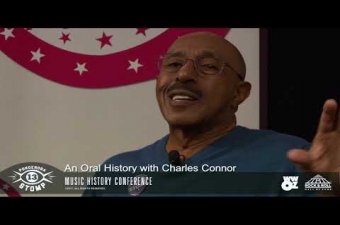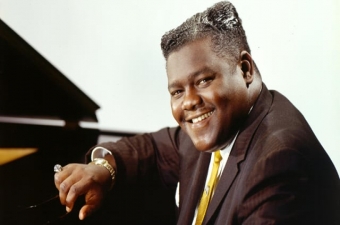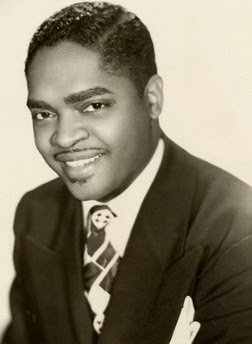
The Roots of Rock ‘n’ Roll
The Roots of Rock ‘n’ Roll in New Orleans
New Orleans’ identity as the Birthplace of Jazz tends to overshadow the city’s vital contributions to the development of rock ‘n’ roll. While no locale can claim sole credit for creating rock music, New Orleanians played an outsized role in the process, often by drawing on the same traditions that gave rise to jazz.
The term “rock” reached the American mainstream largely thanks to the hit song “Good Rocking Tonight,” written and recorded first by Roy Brown at J&M Studio in 1947. Brown’s suggestive lyrics—Tonight she’ll know I’m a mighty, mighty man—hinted at the abandon rock ‘n’ roll would unleash. (Seven years later, Elvis Presley, loose hips and all, covered the song as one of his first singles.)
Brown’s success reflected trends in popular African American music in the 40s, when the wartime economy forced big bands to give way to smaller combos, and an increasingly urban population embraced the up-tempo rhythm of jump blues. After World War II in New Orleans, especially in the neighborhood now known as Central City, a new crop of Black nightclubs featured local talent along with national stars of the Chitlin Circuit playing the latest styles. These venues, like the legendary Dew Drop Inn, were creative hotbeds, where Brown and others ushered in the era of rhythm and blues.
1947 proved to be a formative year for R&B in the city. Along with “Good Rocking Tonight,” records by bandleader Paul Gayten and vocalist Annie Laurie showed the local scene’s commercial potential. East and West Coast record labels started scouting New Orleans for talent, and found it all over town.
A key figure in bringing that talent to market was Dave Bartholomew, leader of the city’s top dance band, who became a producer and A&R man in this period. Born in 1918, he had the same trumpet teacher as Louis Armstrong, and grew up in the city’s jazz tradition. He brought that rhythmic sensibility to seminal R&B records like “The Fat Man,” which he wrote and recorded with Fats Domino in 1949.
Bartholomew’s emphasis on “the big beat” was shared by Domino, who played piano with a heavy left hand, and by drummer Earl Palmer, who would derive rock ‘n’ roll’s signature backbeat from the second line parades he followed as a kid. It was a partnership for the ages: Domino became a sensation, ultimately selling over 65 million records. As with early jazz recordings a generation earlier, the sounds of Black New Orleans filled dance floors with young people of all backgrounds, serving as a soundtrack of postwar American culture.
“The Fat Man” was another product of J&M Studio, which emerged as an unlikely hit factory. Run by Cosimo Matassa, a 20-something with no recording experience, it was a bare-bones, 15-by-16-foot room in the back of a jukebox business on the fringes of the French Quarter (notably, it was shouting distance from Congo Square, where enslaved people had laid the foundation of New Orleans’ drumming and dancing traditions). Matassa proved to be a masterful engineer, and defied segregation to work with a world-class house band spun off from Bartholomew’s orchestra, including Palmer, a future Rock & Roll Hall of Famer, and Lee Allen, whose tenor saxophone sound became iconic.
Other hits followed, like “Lawdy Miss Clawdy” from Lloyd Price in 1952, and talent from outside the city, including Big Joe Turner, Ray Charles, and Jerry Lee Lewis, came to J&M to get in on the action. As the audience for R&B grew in the early 50s, the “New Orleans sound” became part of its DNA.
In 1955 Matassa’s studio and house band produced another landmark recording, “Tutti Frutti” by Little Richard, which, like “Good Rocking Tonight” and “The Fat Man,” is a contender in the perpetual debate about which was the first “rock ‘n’ roll” record. The original version of “Tutti Frutti” was profoundly raunchy (it started with Tutti Frutti, good booty and got more descriptive from there), but a songwriter in New Orleans, Dorothy LaBostrie, reworked the lyrics for mass consumption. It was a smash, launching Little Richard as a rock ‘n’ roll trailblazer.
The unforgettable opening line of “Tutti Frutti”—Wop bop a loo bop a lop bom bom—came from a cadence played by a New Orleans drummer, Charles Connor, who played in Richard’s touring band. Like Earl Palmer, Connor was born and raised a few blocks from J&M and Congo Square, earned money dancing as a child, and came up in the New Orleans drumming tradition—his first gig was with Professor Longhair, the legendary local pianist renowned for his Latin-tinged rhythms. Behind Little Richard’s driving piano, Connor pivoted from a standard R&B shuffle to a barrage of straight eighth-notes. For some observers, this marks the shift from “rhythm and blues” to “rock ‘n’ roll.”
For the musicians, these labels were an afterthought. Earl Palmer, who would play pounding eighth notes behind Little Richard in the studio (they hit especially hard on “Lucille,” recorded in 1956), moved to Los Angeles and became the most sought-after session drummer in the business. Even after he was regarded as among the most influential drummers in rock history he didn’t see himself as a rock ‘n’ roller. Like New Orleans artists since the dawn of jazz he played whatever a gig called for, and knew a strong backbeat, like the bass drum in a second line, would put bodies in motion.
Take a virtual tour of sites related to the dawn of rock ‘n’ roll in New Orleans.
Videos

Charles Connor recounts crafting some of rock 'n' roll's foundational beats as a drummer with Little Richard at the 2017 Ponderosa Stomp Music History Conference.
Video by The Ponderosa Stomp.
Charles Connor recounts crafting some of rock 'n' roll's foundational beats as a drummer with Little Richard at the 2017 Ponderosa Stomp Music History Conference.

From WWOZ's Tricentennial Music Moments: a short video about Fats Domino's big break in 1949.
Video by WWOZ.
From WWOZ's Tricentennial Music Moments: a short video about Fats Domino's big break in 1949.
Images











